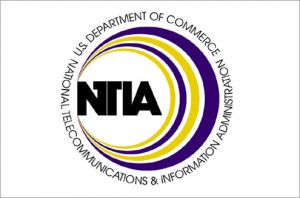National Telecommunications and Information Administration, issued “A Proposal to Improve the Technical Management of Internet Names and Addresses.”


Date: 01/30/1998
Foundation statutory authority to commercialize the NSFNET, which formed the basis for today’s Internet. As a legacy, major components of the domain name system are still performed by or subject to agreements with agencies of the U.S. government.
Assignment of Numerical Addresses to Internet Users
Every Internet computer has a unique IP number. The Internet Assigned Numbers Authority (IANA), headed by Dr. Jon Postel of the Information Sciences Institute (ISI) at the University of Southern California, coordinates this system by allocating blocks of numerical addresses to regional IP registries (ARIN in North America, RIPE in Europe, and APNIC in the Asia/Pacific region), under contract with DARPA. In turn, larger Internet service providers apply to the regional IP registries for blocks of IP addresses. The recipients of those address blocks then reassign addresses to smaller Internet service providers and to end users.
Management of the System of Registering Names for Internet Users
The domain name space is constructed as a hierarchy. It is divided into top-level domains (TLDs), with each TLD then divided into second- level domains (SLDs), and so on. More than 200 national, or country- code, TLDs (ccTLDs) are administered by their corresponding governments
or by private entities with the appropriate national government’s acquiescence. A small set of generic top-level domains (gTLDs) do not carry any national identifier, but denote the intended function of that portion of the domain space. For example, .com was established for commercial users, .org for not-for-profit organizations, and .net for network service providers. The registration and propagation of these key gTLDs are performed by Network Solutions, Inc. (NSI), a Virginia- based company, under a five-year cooperative agreement with NSF. This agreement includes an optional ramp-down period that expires on September 30, 1998.
Operation of the Root Server System
The root server system contains authoritative databases listing the TLDs so that an Internet message can be routed to its destination. Currently, NSI operates the “A” root server, which maintains the authoritative root database and replicates changes to the other root servers on a daily basis. Different organizations, including NSI, operate the other 12 root servers. In total, the U.S. government plays a direct role in the operation of half of the world’s root servers. Universal connectivity on the Internet cannot be guaranteed without a set of authoritative and consistent roots.
Protocol Assignment
The Internet protocol suite, as defined by the Internet Engineering Task Force (IETF), contains many technical parameters, including protocol numbers, port numbers, autonomous system numbers, management information base object identifiers and others. The common use of these protocols by the Internet community requires that the particular values used in these fields be assigned uniquely. Currently, IANA, under contract with DARPA, makes these assignments and maintains a registry of the assigned values.
The Need For Change
From its origins as a U.S.-based research vehicle, the Internet is rapidly becoming an international medium for commerce, education and communication. The traditional means of organizing its technical functions need to evolve as well. The pressures for change are coming from many different quarters:
There is widespread dissatisfaction about the absence of competition in domain name registration. Mechanisms for resolving conflict between trademarkholders and domain name holders are expensive and cumbersome. Without changes, a proliferation of lawsuits could lead to chaos as tribunals around the world apply the antitrust law and intellectual property law of their jurisdictions to the Internet.
Many commercial interests, staking their future on the successful growth of the Internet, are calling for a more formal and robust management structure. An increasing percentage of Internet users reside outside of the U.S., and those stakeholders want a larger voice in Internet coordination. As Internet names increasingly have commercial value, the decision to add new top-level domains cannot continue to be made on an ad hoc basis by entities or individuals that are not formally accountable to the Internet community.
As the Internet becomes commercial, it becomes inappropriate for U.S. research agencies (NSF and DARPA) to participate in and fund these functions.